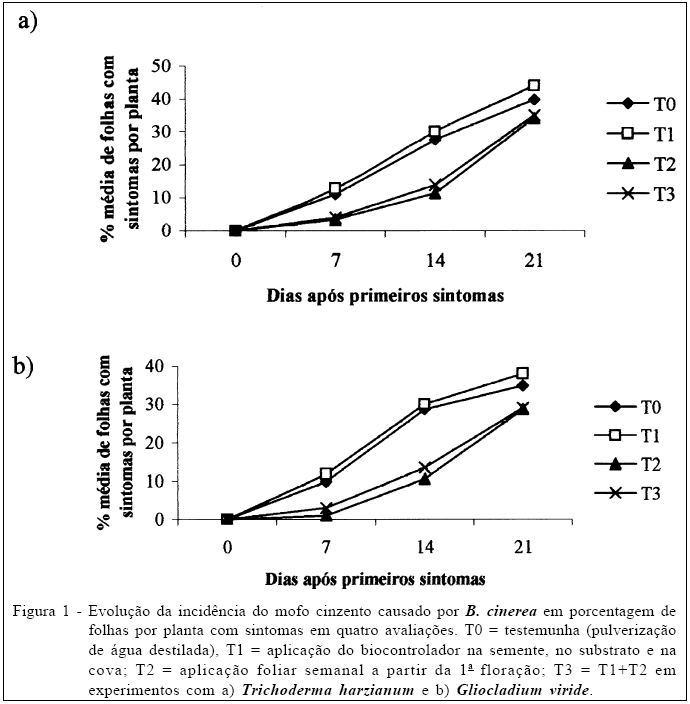The production of tomato in the State of Rio Grande do Sul performs an important economical and social role that can be evidenced by the increase in cultivation of this vegetable in protected environment. This practice allows the production of tomato during the off-season periods. However, it can also promote favorable conditions to the development of gray mold caused by Botrytis cinerea, and the arising of pathogen races resistant to fungicides is turning biological control into a necessary alternative. In the present work, an in vitro selection among 24 isolates of the fungus Trichoderma harzianum and 12 of Gliocladium viride that inhibited the development of the pathogen B. cinerea was carried out. Two isolates (TRIC-30 e GLIO-10) were selected to be tested in an experiment in field conditions with tomatoes cultivated under protected environment. In this experiment, the weekly foliar pulverization of a suspension with 2x10(7) conidia mL-1 significantly decreased the incidence of gray mold, while the application of the antagonists on the seeds, substrate and seed hole during seeding did not reduced the incidence of the pathogen.
Lycopersicum esculentum; biological control; gray mold; greenhouse; in vitro selection



